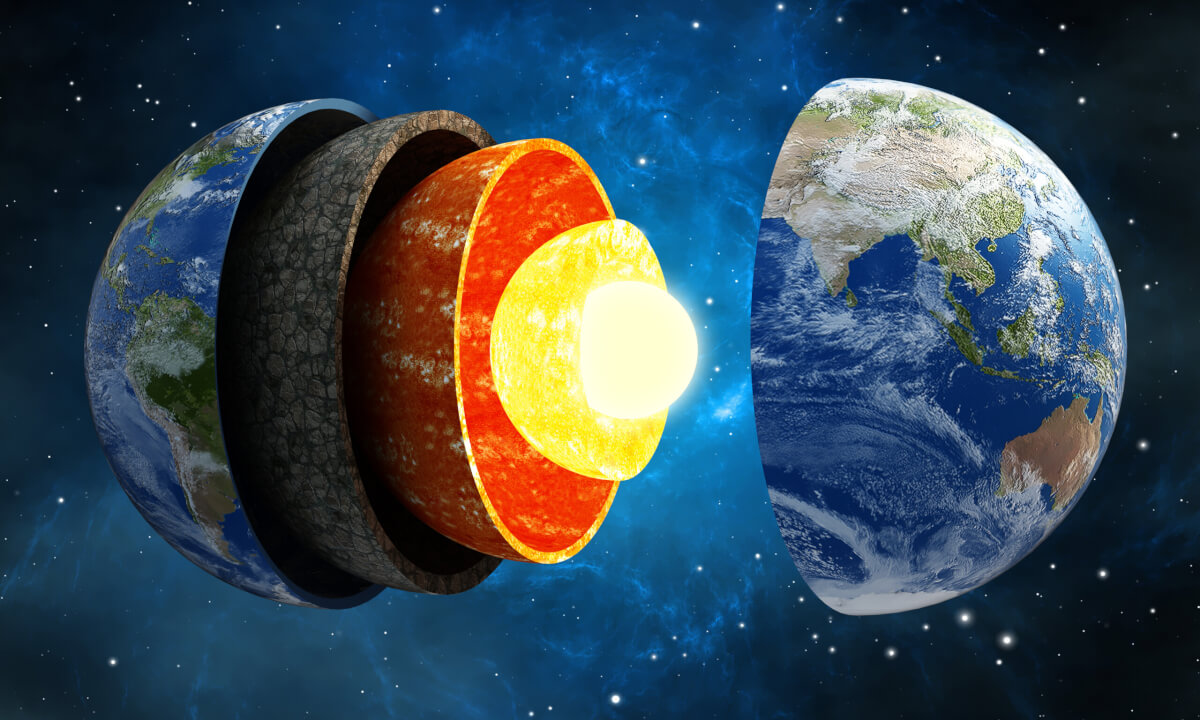
Los Angeles – New research shows that Earth’s inner core, a solid iron ball located deep within our planet, has slowed its rotation. Scientists from the University of Southern California say their discovery challenges previous notions about the behavior of the inner core and raises interesting questions about its impact on Earth’s dynamics.
It has long been known that the inner core, a mysterious realm located about 3,000 miles beneath our feet, rotates independently of the Earth’s surface. Scientists have spent decades studying this phenomenon, believing it plays a crucial role in generating our planet’s magnetic field and shaping convection patterns in the liquid outer core. Until now, it has been widely accepted that the inner core is gradually rotating faster than the rest of the Earth, a process known as… Super rotation. However, this latest study, published in the journal nature, It reveals a surprising development in this novel.
“When I first saw the seismograms that hinted at this change, I was mystified,” John Vidal, the dean’s professor of earth sciences at the USC Dornsife College of Letters, Arts and Sciences, said in a statement. “But when we found twenty other observations pointing to the same pattern, the conclusion was inevitable. The inner core had slowed for the first time in several decades. Other scientists have recently argued in favor of similar and different models, but our latest study provides the most convincing solution.”
Slow down the rotation, reverse the rhythm
By analyzing seismic waves generated by repeated earthquakes in the South Sandwich Islands from 1991 to 2023, the researchers discovered that the rotation of the inner core had not only slowed down, but had actually slowed down as well. opposite direction. The team focused on a specific type of seismic wave called PKIKP, which crosses the inner core and is recorded by seismic arrays in northern North America. By comparing the waveforms of these waves from 143 pairs of repeated earthquakes, they noticed a strange pattern.
Many earthquake pairs showed seismic waveforms that changed over time, but remarkably, later returned to match their earlier counterparts. This observation suggests that the inner core, after a period of superrotation from 2003 to 2008, has begun to subrotate, or rotate more slowly than the Earth’s surface, essentially retracing its previous path. The researchers found that from 2008 to 2023, the inner core was rotating two to three times slower than the previous superspin.
The study results paint a captivating picture of the rotational dynamics of the inner core. The identical waveforms observed in many pairs of earthquakes indicate the moments when the inner core returned to the positions it had occupied in the past, relative to the mantle. This pattern, combined with insights from previous studies, reveals that the rotation of the inner core is much more complex than simple, static superrotation.
The researchers discovered that the superrotation of the inner core from 2003 to 2008 was faster than the subsequent subrotation, indicating an asymmetry in its behavior. This difference in rotation rates suggests that the interactions between the inner core, outer core, and mantle are more complex than previously thought.
Limitations: Basic puzzle pieces
While the study provides compelling evidence that the inner core is slowing down and reversing its rotation, the study of course has some limitations. The spatial coverage of seismic data is relatively sparse, especially in the North Atlantic Ocean, due to the presence of chert layers that have hampered continuous drilling. Furthermore, the Earth system model used in the study, although complex, is still a simplified representation of the complex dynamics involved.
The authors stress the need for additional high-resolution data from a wider range of sites to strengthen their findings. They also call for continued improvement of Earth system models to better understand the complexities of the behavior of the inner core and its interactions with the outer core and mantle.
What do the results mean for the future?
The discovery of the inner core slowing down and reversing its rotation has major implications for our understanding of the Earth’s interior and its impact on the dynamics of our planet. The behavior of the inner core is closely related to the Earth’s magnetic field and convection patterns in the outer core.
This study also raises fascinating questions about the possible consequences of changing the rotation of the inner core on the Earth’s surface. Could these variations in rotation affect Earth’s magnetic field, climate, or even the length of our days? Vidal points out that the change could lead to changes in the length of the day by fractions of a second. “It’s so hard to notice that, within a millisecond, you’re almost lost in the noise of the ocean and the churning atmosphere,” he says.
No doubt, future research will explore these interesting possibilities in greater depth.
“The inner dance of the heart may be more vibrant than we know so far,” Vidal adds.
This article was reviewed by StudyFinds Editor-in-Chief Steve Fink.




More Stories
Boeing May Not Be Able to Operate Starliner Before Space Station Is Destroyed
Prehistoric sea cow eaten by crocodile and shark, fossils say
UNC student to become youngest woman to cross space on Blue Origin